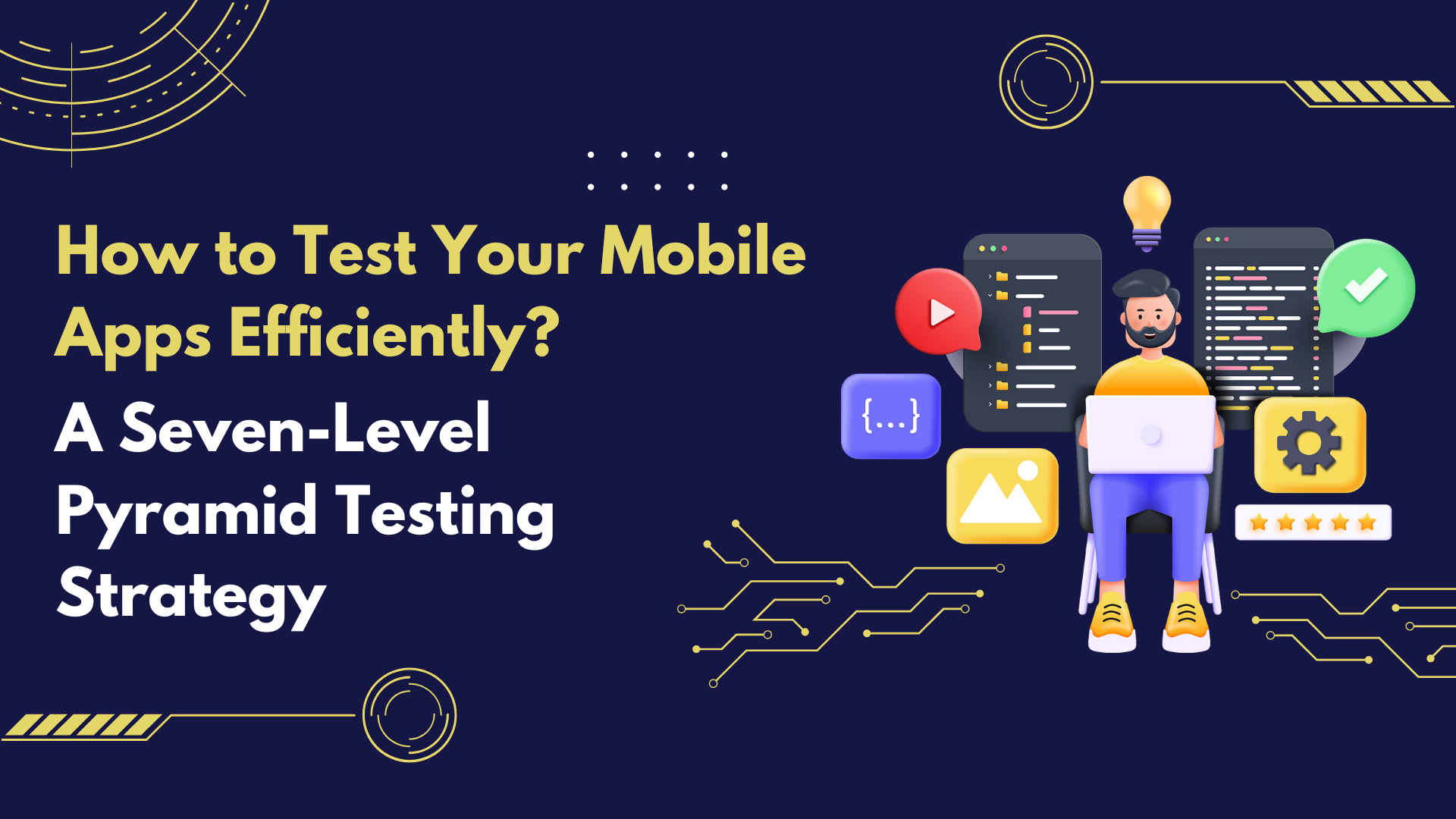User testing allows you to see how real people behave when using your app, rather than relying on analytics or what your friends or family tell you. You can test in-person with users and watch them navigate through the app, or you can set up a survey to ask them questions about their experience with the app and how they feel about different aspects of it. Either way, mobile app testing will help you refine your product’s features and user experience before launching it to the public.
7 Levels of Pyramid Testing
The pyramid testing strategy is a method for testing the quality of a product by using different levels of acceptance. It starts with the most critical points and moves to the least critical points.
Level One: Unit Testing
Unit testing is the most basic and often overlooked part of app testing. It is the process of testing each component for errors before integrating them into a cohesive whole. Unit tests are typically small, fast, and focused on one area of functionality.
Developers can perform unit tests at any time, and they are usually written using a unit testing framework such as JUnit or NUnit. When performing unit tests, a complete application is not necessary to test individual components; instead, isolated code pieces (units) can be run independently.
Level Two: Integration Testing
In this stage, your app is tested for its ability to function correctly. It will include testing the various parts of your app and ensuring they work together as expected. The goal is to ensure everything integrates correctly and that there are no bugs in any components. Before performing these tests, you must identify all the different use cases or scenarios to ensure your app is fully functional and can handle a wide range of input or data.
Despite the difficulty, Integration Tests are a level to be addressed if your initial plan is to reduce the number of manual tests.
Level Three: System Testing
System testing aims to check that all the parts of your application work together. You should be able to use your app and enter data; everything should work correctly. This includes ensuring that what you see on the screen matches how your data is stored in a database or other storage location.
UI Tests, and Unit Tests, are the most commonly used methods for implementation. However, environmental questions make them more challenging to set up and maintain than tests at lower levels.
Consumer Driven Contract Testing is another option. This elegant technique should quickly identify regressions between the front and back ends.
Level Four: Application Testing
Application tests take into account all the different parts of the tested application. For example, we can discuss all the different layers that make up the program. They ensure that your app works without interruptions from the outside. It can give you confidence that the logic in your app is working.
Since they are costly to implement and maintain, we recommend that you test only those scenarios that can’t be tested via unit or integration tests.
Implementation often requires UI Tests (XCUITest, Espresso, or Appium for cross-platform, BlackBox testing) or Snapshot tests.
A list of test cases needs to be approved from this point and up to the top since you also need approval from those levels.
Level Five: Performance Testing
Performance testing is a crucial stage of app testing but is also often overlooked. This type of testing ensures that your app performs as expected on a variety of devices and networks. Performance tests are an excellent way to identify problems with an app that only occur under certain conditions, such as low network speeds or battery levels. When performance tests are done well, they can pinpoint specific problems and help you create solutions for them before release day arrives.
Level Six: Security Testing
Mobile app security testing should be performed before releasing your product for public use. It includes a vulnerability assessment that evaluates the application’s infrastructure and security mechanism to identify potential loopholes. It should be followed by penetration testing to check if there is a possibility of a hack using the vulnerability determined by the vulnerability assessment.
Level Seven: Installation Testing
The next level of testing for your mobile apps is installation testing. The goal is to ensure that your app can be installed on the device and works without errors. It’s a good idea to test on various devices, operating systems, and configurations because different devices may have different bugs. The goal of this type of testing is not about finding bugs; it’s just about verifying that the installation process works as expected.
With this seven-level pyramid testing strategy for mobile apps, you can find and fix these bugs before they become a problem.
Conclusion
Now that you’ve learned about the seven levels of testing, it’s time to start testing your mobile apps. You can’t just test on one or two levels; you need to test at all seven levels. It will help ensure that your app is ready for launch and provide a better user experience for everyone who uses it.
TestGrid is an automation testing platform that offers a comprehensive range of end-to-end testing features. The platform helps users thoroughly test their mobile application on all parameters to identify potential bugs.
The best thing about this solution is that it provides complete reports on successful and failed tests and can be used by developers or testers with no programming skills.
Read: Top Love Quotes in Tamil Language.

